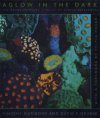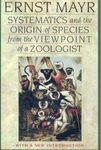Out of Print
By: Vincent Pieribone and David Gruber
263 pages, colour photos, colour illustrations
Marvellous story of the discovery of biofluorescence
![Aglow in the Dark Aglow in the Dark]()
Click to have a closer look
About this book
Contents
Biography
Related titles
About this book
In the early 1960s, in a small shack on the Washington coast, a young, self-educated Japanese scientist performed an experiment to determine what made a certain jellyfish glow. The substance he discovered, green fluorescent protein, would revolutionize molecular biology, transforming our study of everything from the AIDS virus to the workings of the brain. Aglow in the Dark follows the path that took this glowing compound from its inauspicious arrival on the scientific scene to its present-day eminence as one of the most groundbreaking discoveries of the twentieth century.
The story unfolds in far-flung places, from the coral reefs of the Pacific Ocean, to the medical schools and marine stations of our leading universities, to a cold war-era research laboratory in Moscow. Traversing the globe and the decades, Aglow in the Dark conveys the human fascination with bioluminescence, or "living light," its little-known application in war, forensic science, and molecular biology, and how it led to the finding of green fluorescent protein. The book reveals a hidden world where light is manipulated by animals and humans and put to remarkable uses--unlocking the secrets of the human brain, conquering dreaded diseases, and perhaps someday linking minds and machines. The authors deftly lead the reader through a complex story at the interface of biology and physics--and into the realm of wonder on the frontiers of scientific endeavor.
Contents
Foreword by Sylvia Nasar
Prologue
1. Living Light
2. Fireflies of the Sea
3. From the Fires of Nagasaki
4. The Secret of the Jellyfish's Flicker
5. The Light at the End of the Rainbow
6. Illuminating the Cell
7. Glow Worms
8. Fluorescent Spies
9. A Rosy Dawn
10. Shimmering Reefs
11. Lighting Up the Brain
12. Glowing Thoughts
Notes
Acknowledgments
Index
Customer Reviews
Biography
Vincent Pieribone is Associate Professor, Yale University School of Medicine, and Associate Fellow, The John B. Pierce Laboratory, Yale University. David Gruber is a science journalist and biological oceanographer at Rutgers University Institute of Marine and Coastal Sciences.
Out of Print
By: Vincent Pieribone and David Gruber
263 pages, colour photos, colour illustrations
Marvellous story of the discovery of biofluorescence
[A] beautifully illustrated book...The main narrative is riveting, and the authors capture the sometimes curious way that science progresses through an alternation of chance discoveries and systematic, goal-directed experiments. Students wondering whether they are cut out to become scientists ought to be encouraged by the diverse cast of characters involved in solving the mystery of bioluminescence...These are exciting times for biology, and this accessible and lively introduction conveys the sheer pleasure of discovery, as well as the enormous technological potential of fluorescent proteins.
- Thomas G. Oertner, Nature



































